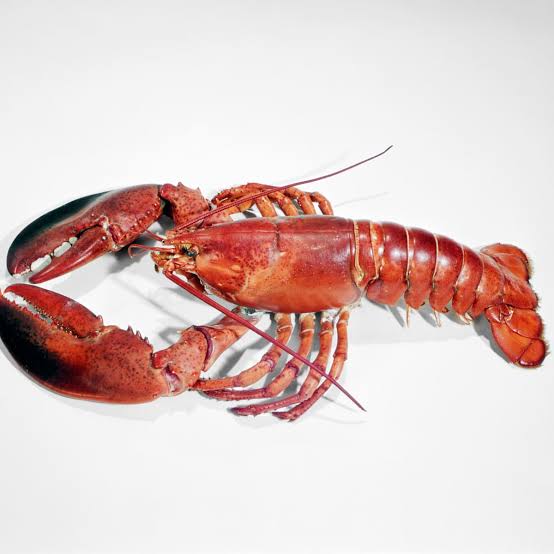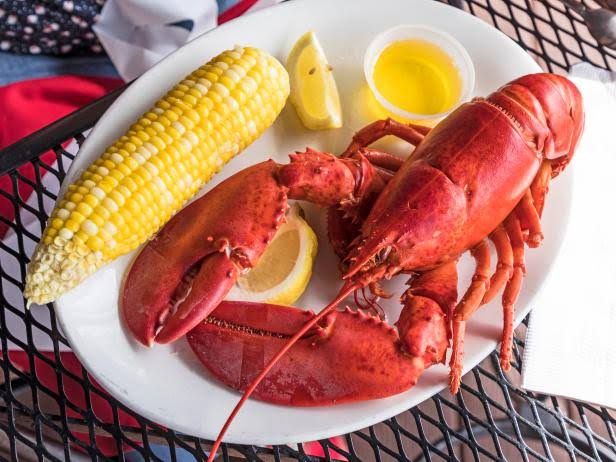Lobster is a type of shellfish that is commonly found in oceans around the world. They are typically considered a delicacy and are often served in high-end seafood restaurants. Lobsters are known for their distinctive taste and texture, which is often described as sweet and firm.
Lobsters are typically caught by fishermen using traps or nets, and they are harvested for their meat, which is located in the tail, claws, and legs. Lobster meat can be cooked in a variety of ways, including boiling, grilling, or baking, and it is often served with butter or other sauces.
In addition to being a popular food item, lobsters are also important to the marine ecosystem as a whole. They serve as an important food source for many other marine animals, and they help to keep the ocean floor clean by scavenging for dead animals and other debris.
Read Also: Vent Pecking (Cannibalism) in Poultry Chickens and Control Measures
Description of a Lobster

Lobsters come in a range of colors, from dark blue-green to bright orange, depending on the species and the location where they are found. They have two large, compound eyes on stalks that allow them to see in all directions, and they have a pair of long antennae that help them navigate their environment.
Lobsters are known for their powerful tails, which they use to swim through the water and to escape from predators. They are also equipped with a unique respiratory system that allows them to breathe underwater, using gills located on the sides of their cephalothorax.
Overall, lobsters have a distinctive appearance that makes them easily recognizable. Their large size, hard exoskeleton, and striking coloration have made them a popular subject for art, literature, and culinary traditions around the world.
Health Benefits of Lobster

Below are potential health benefits of lobsters:
Rich in protein: Lobster is a great source of protein, which is important for building and repairing tissues in the body.
Low in fat: Lobster is relatively low in fat, making it a good option for people who are watching their fat intake.
Rich in omega-3 fatty acids: Lobster contains omega-3 fatty acids, which have been shown to have numerous health benefits, including reducing inflammation, improving heart health, and promoting brain health.
Good source of vitamins and minerals: Lobster is rich in vitamins and minerals such as vitamin B12, zinc, iron, and copper.
May improve brain function: The omega-3 fatty acids in lobster have been linked to improved brain function and memory.
May reduce the risk of heart disease: Lobster’s omega-3 fatty acids may also help to reduce the risk of heart disease by improving cholesterol levels and reducing inflammation.
May help regulate blood pressure: Lobster is a good source of potassium, which may help to regulate blood pressure.
May help with weight management: Lobster is low in calories and fat, making it a good option for people who are trying to manage their weight.
May improve eye health: Lobster is a good source of vitamin A, which is important for eye health.
May boost immune function: Lobster is rich in selenium, which has been shown to boost immune function.
May help reduce inflammation: Lobster’s omega-3 fatty acids may help to reduce inflammation in the body.
May improve skin health: Lobster is a good source of zinc, which is important for skin health.
May help prevent anemia: Lobster is rich in iron, which is important for preventing anemia.
May help prevent osteoporosis: Lobster is a good source of calcium, which is important for bone health.
May help prevent cancer: Lobster is rich in antioxidants, which may help to prevent cancer.
May improve thyroid function: Lobster is a good source of iodine, which is important for thyroid function.
May help regulate blood sugar levels: Lobster is a low-glycemic food, which means that it may help to regulate blood sugar levels.
May help with digestion: Lobster is a good source of fiber, which is important for digestion and bowel regularity.
Uses of Lobsters
Lobster meat: Lobster meat is the most prized part of the lobster and is used in a variety of dishes such as lobster rolls, lobster bisque, lobster salad, and lobster mac and cheese.
Lobster broth: The shells and heads of lobsters can be used to make a flavorful broth that is used as a base for soups and sauces.
Lobster tail: Lobster tails are often grilled, broiled, or baked and served with butter or a dipping sauce.
Lobster shell: The lobster shell is sometimes used as a decorative element in seafood dishes, such as a garnish or a serving vessel.
Lobster roe: The eggs or roe of female lobsters are sometimes used as a garnish or added to seafood dishes for a pop of color and flavor.
Lobster butter: Lobster butter is a mixture of lobster meat and butter that is used as a spread or sauce for seafood dishes.
Lobster stock: Lobster stock is a concentrated broth made from lobster shells and heads that is used as a base for soups, sauces, and risottos.
Overall, lobster is a versatile ingredient that can be used in a variety of ways to add flavor and texture to dishes.
Read Also: Maize Definition and Economic Importance
Processing and Preserving the Lobster
Cleaning – Before processing, the lobster needs to be cleaned thoroughly. Remove the rubber bands from the claws, then rinse the lobster under cold running water to remove any dirt or debris. Use a brush to scrub the shell if needed.
Cooking – After cleaning, the lobster can be cooked using one of the methods mentioned earlier, such as boiling, steaming, grilling, or baking.
Shucking – Shucking is the process of removing the meat from the lobster shell. This can be done by cracking the shell with a lobster cracker or nutcracker and removing the meat with a pick. The meat can be used for various dishes, such as lobster rolls, salads, and bisques.
Freezing – Lobster can be frozen to extend its shelf life. After cooking and shucking, pack the meat in airtight containers or plastic bags and freeze. Frozen lobster can last for up to 6 months in the freezer.
Canning – Canning is another method of preserving lobster. After cooking and shucking, pack the meat in jars with brine or other preservatives, then process in a pressure canner according to the instructions. Canned lobster can last for up to 2 years if stored in a cool, dry place.
Smoking – Smoking is a popular way to add flavor to lobster. After cooking and shucking, smoke the meat using a smoker or smokehouse. Smoked lobster can be stored in the refrigerator for up to 3 days or frozen for up to 3 months.
Overall, processing and preserving lobster requires careful handling and proper storage to maintain its quality and safety.
Read Also: Rabbits (Oryctolagus cuniculus)
